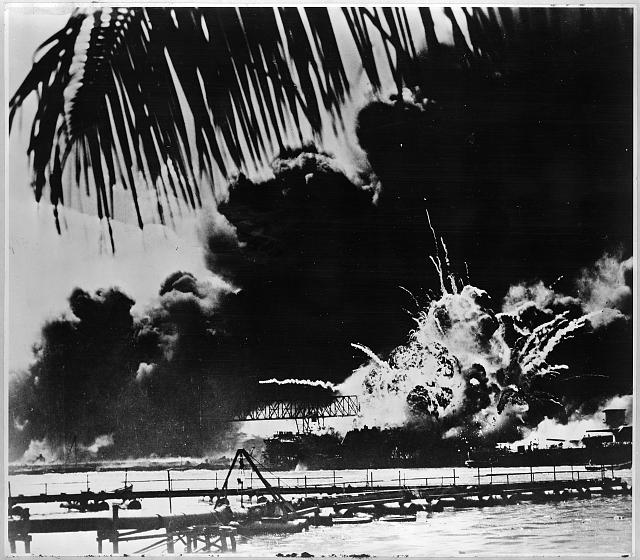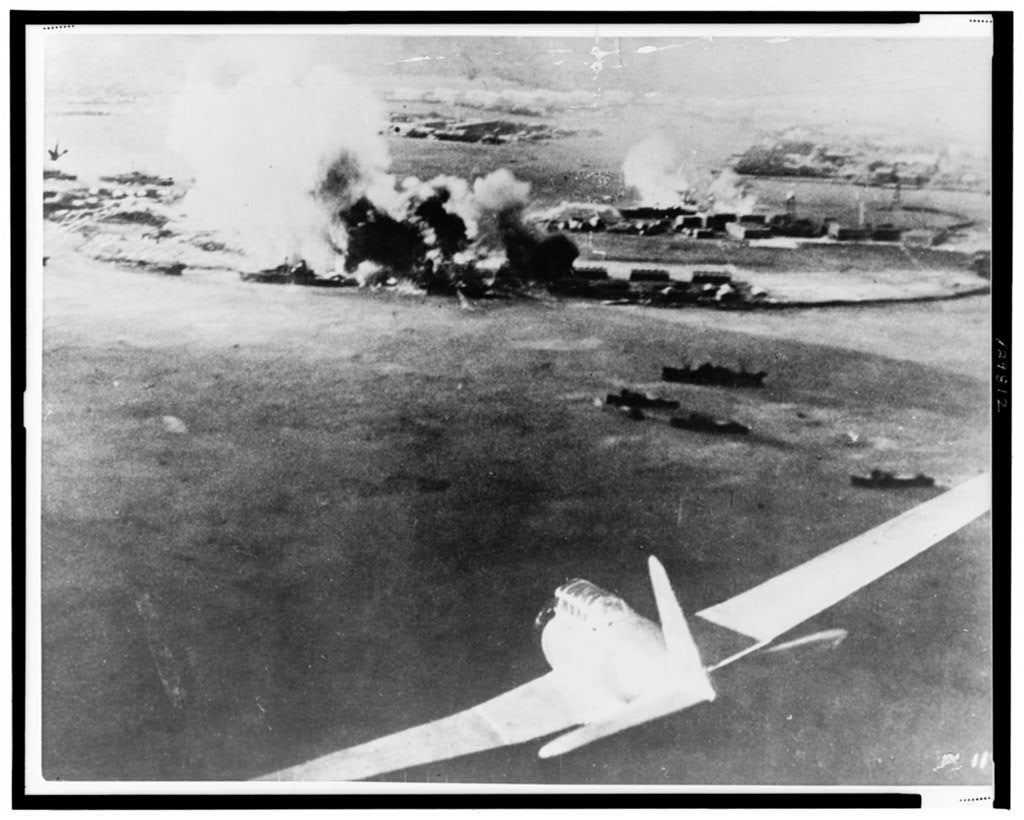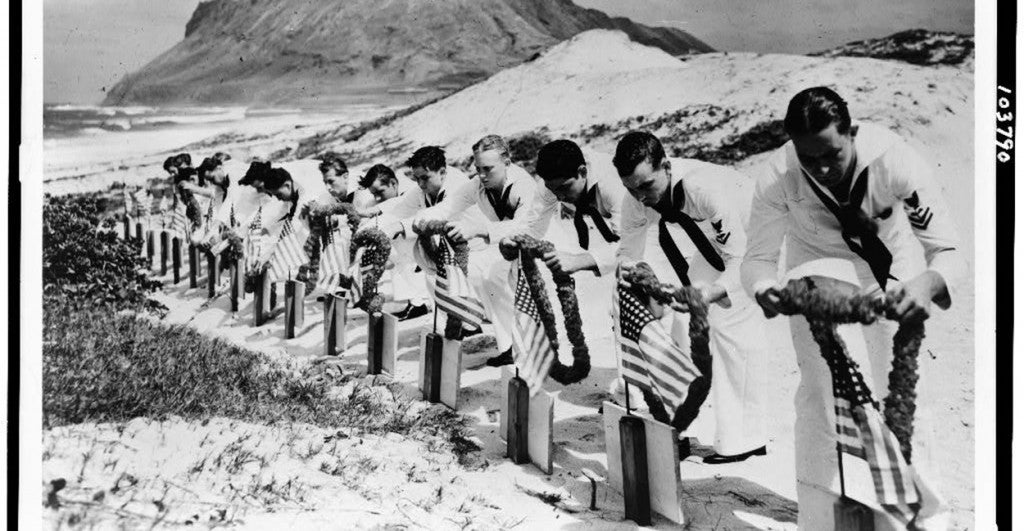Seventy-three years ago today, on Dec. 7, 1941, the Imperial Japanese Navy attacked the U.S. naval base at Pearl Harbor, Hawaii, an act that plunged the nation into World War II. The surprise attack that Sunday lasted less than two hours but killed more than 2,500, wounded about 1,000 and ruined 318 American ships and airplanes. Today we honor the lives lost and remember the terrible day that, in President Franklin D. Roosevelt’s words, will “live in infamy.”

The USS Shaw ablaze after the Japanese attack on Pearl Harbor. (Photo: Library of Congress Prints and Photographs)

A Japanese pilot took this photo of the bombardment. A Japanese bomber is in the foreground. (Photo: Library of Congress Prints and Photographs)
Eight miles from Pearl Harbor, three civilians died in this shrapnel-riddled car. (Photo: Library of Congress Prints and Photographs)
Smoke billows from the USS Arizona during the height of the fire. (Photo: Library of Congress Prints and Photographs)
A Japanese bomber, a thin line of smoke trailing in its wake, after being struck by anti-aircraft fire. (Photo: Library of Congress Prints and Photographs)
Japanese kamikaze, or suicide, pilots that were organized and used in the war in the latter half of 1944. (Photo: Keystone Pictures/Newscom)
After being severely damaged and beached, the USS Nevada makes ready to leave her Hawaiian anchorage for permanent repairs elsewhere. (Photo: Library of Congress Prints and Photographs)
One of 80 Navy planes wrecked by Japanese bombs and bullets, this is an OS2U — an Observation Scout built by Vought-Sikorsky. (Photo: Library of Congress Prints and Photographs)
President Franklin D. Roosevelt makes his first radio address to the nation since the attack. (Photo: CSU Archives/Newscom)
The USS Neosho, a Navy oil tanker, backs away from her berth (right center) in a successful effort to escape the attack. At left, the battleship USS California lists after aerial blows. Other crippled warships and part of the hull of the capsized USS Oklahoma are visible in the background. The Neosho later was sunk in the Coral Sea. (Photo: Library of Congress Prints and Photographs)
Ruins of a B-17C rest near Hickam Field. Nearly half of about 60 airplanes at Hickam were destroyed or severely damaged. (Photo: Newscom)
